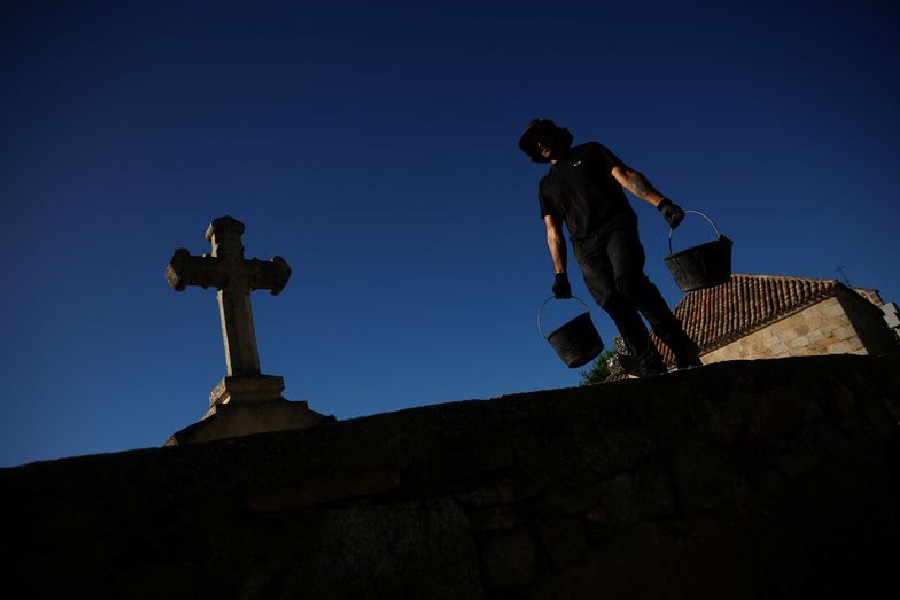The specificity with which places of worship were targeted by a large crowd is evidence of both the scale of the rot within society and the high level of local organisation required to make it possible. TLP, other Barelvi extremists, and their backers have much to answer for.
A preliminary analysis of the Jaranwala tragedy shows that anti-minority mob violence has two aspects. The first of these is the law-and-order aspect, which is what state officials tend to focus on. The assumption is that in any society there will be instances where violence can become likely.
However, local authorities should be able to take administrative steps required to defuse any potential situation, such as a blasphemy allegation, that may result in violence. If law-and-order administration is effective and far-sighted enough, such an intervention would help mitigate the risk of a full-blown riot. In the Jaranwala case, it was not.
Failing to resolve a situation prior to its escalation, the law-and-order aspect of the response would then involve managing a mob to limit its ability to carry out violence. Whether this is through riot control, detention, or other use of force, is immaterial. The aim should be to prevent any loss of life and property of a community at risk.
In the Jaranwala case, this too did not happen. In fact, if video evidence is anything to go by, local law enforcement remained passive, while administrators attempted to negotiate with the extremists from a position of weakness.
Extremist clerics, pandering politicians, conniving generals, status-seeking businessmen, and honour-seeking young men all feed into it.
The third stage, having failed at the first two, involves punitive consequences for those involved in the violence. This would mean strong punishments that are sufficient to act as a deterrent. The idea being that while one unfortunate incident has happened, the consequences would be enough to prevent another one from taking place.
Worth pointing out that there were zero convictions from the 2013 Joseph Colony incident so there is no deterrence to speak of. A hundred houses were burnt and 115 accused persons were acquitted. It seems the houses set themselves on fire.
Beyond the law-and-order aspect, the second aspect of mob violence is social and political. Mobs are not instant creations. The ideas that rile them up do not appear out of nowhere. The methods they use for violence are not spontaneously learned. The resources they draw on do not magically descend from heaven (or, as would be more appropriate, ascend from hell). All of these things have definitive roots in society.
The sociopolitical aspect of violent incidents such as the one in Jaranwala is far harder to tackle because it is so wide-ranging. A toxic mix of extremist clerics, pandering politicians, conniving generals, status-seeking businessmen, and honour-seeking young men all feeds into it.
Over the past decade and a half, Pakistani society has witnessed the Barelvi far-right gain recognition, prestige, and massive followership by weaponising the issue of blasphemy and respect for the Prophet (PBUH).
Drawing on global incidents, they have domesticated the idea of a threat to Islam in a country that is 95 per cent Muslim. Incidents like Jaranwala happen because of the takeover of mosques, the discrediting of mainstream clerics, and the use of grassroots organising and digital outreach.
But they also happen because generals are happy to co-opt these movements for political ends. They happen, in part, because a braying mob paid a few thousand rupees each is useful to cut down a political government to size. And because a few thousand votes are useful to achieve the desired election result.
They happen because a politician who gets up and says he would cut off the head of an alleged blasphemer ends up validating vigilante violence as a source of prestige.
A politician who says he will not forgive others for endangering respect for the Prophet (PBUH) by attempting to make a procedural change in some legal document is also part of the problem.
A politician who makes unfathomable changes to marriage documents in a bid to publicise his pious credentials has also contributed to the issue. And an assembly that attempts to pass legislation widening the ambit of blasphemy and endangering an entire sect is adding explosive fuel to an already burning fire.
There are other contributions at play here as well. There is the local bureaucrat who doesn’t want to ruffle any feathers. There’s a businessman who wants to earn a bit of recognition in the community, so ends up sponsoring a few religious gatherings and donates to a local TLP chapter.
Maybe he does it under pressure, maybe he believes in what’s being preached, or maybe he’s just in it for the name on the banner or the plaque outside the mosque. The intentions are immaterial because the outcome is the same.
And then there is the actual mob itself. Young men, with little prospects of upward social and material mobility. Religious rhetoric provides them with a sense of community and of being a part of something bigger. Indoctrinated with notions of honour and masculinity that can only be validated by taking revenge from some vulnerable minority over an imagined crime they probably didn’t even commit.
Even in a state of heightened pessimism, one could see the possibility of a low-capacity state like Pakistan fixing the law and order aspect of mob violence to some degree. Addressing the toxic social and political aspect, however, seems far more difficult.
The writer teaches politics and sociology at Lums.
Twitter: @umairjav
Published in Dawn, August 21st, 2023















